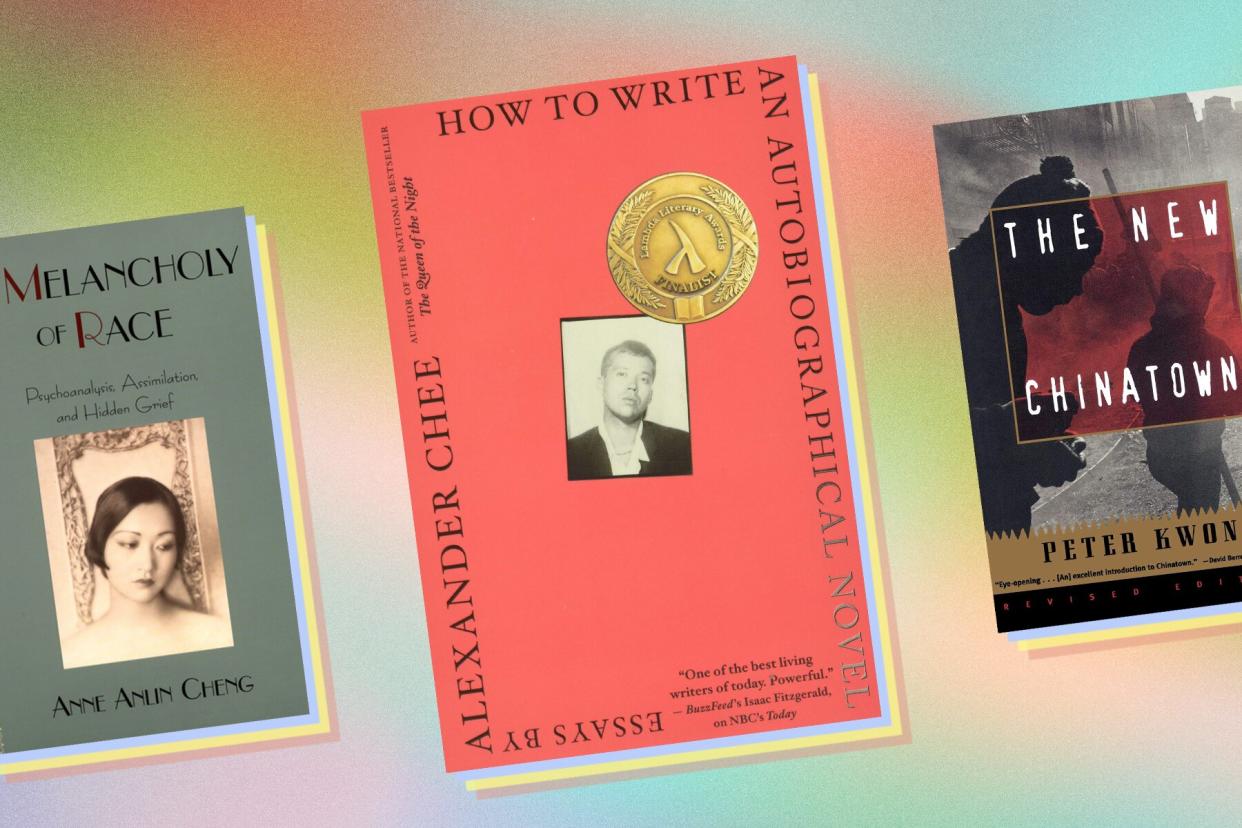9 Nonfiction Books by AAPI Authors That Should be on Your Reading List

Courtesy/InStyle
May marks Asian American and Pacific Islander (AAPI) Heritage Month, and also a fantastic opportunity to read work by AAPI voices. Nonfiction works provide a deeper understanding of the diverse Asian cultures in America, as well as personal experiences that have often struggled to penetrate the mainstream. Though any one list isn't comprehensive, it can serve as a great jumping-off point for books to read all year long.
We turned to New Yorker staff writer Jiayang Fan, New York Times bestseller Esmé Weijun Wang, musician and author Michelle Zauner of Japanese Breakfast, author Mira Jacob, and freelance journalist and author Larissa Pham for their recommendations. Read on for some of the books by AAPI writers that they have found themselves picking up again and again.
The Melancholy of Race by Anne Anlin Cheng
"The Melancholy of Race by the Chinese-American historian and theorist Anne Anlin Cheng is astonishing in the way it illuminates the meaning of racial grief and differentiates it from grievance," Fan says. "Cheng writes beautifully and incisively about race as it relates to cultural identity and what it means to both lose and gain parts of yourself when you live as a minority member of a white majority society."
The New Chinatown by Peter Kwong
"I came upon this book by the late scholar Peter Kwong while writing my first in-depth piece about Chinatown and found its clear-eyed explanations of Chinatown's underground economy invaluable to understanding both Chinatown and America," Fan explains.
All You Can Ever Know by Nicole Chung
As a Korean American adoptee growing up in Oregon, Chung never felt like she completely belonged. In her memoir, she recalls her journey of finding her birth parents and learning more about herself during the process. "It's thoughtful and I think shows her remarkable skill as a writer as well as an editor," Wang says.
RELATED: Almost Asian, Almost American
Dictee by Theresa Hak Kyung Cha
"I've long been drawn to Dictee, Theresa Hak Kyung Cha's hybrid text, which combines a number of forms, including visual art, and cues from visual art — it pushes our ideas of what a book must look like, or be," Pham explains.
How to Write an Autobiographical Novel by Alexander Chee
Alexander Chee's How to Write an Autobiographical Novel was recommended by several of the writers we spoke to, including Zauner, Pham, and Jacob.
"It navigates questions of craft and authorship while gently complicating our ideas of what memoir and fiction can do," Pham explains. Jacob adds of Chee's debut nonfiction collection: "It talks about how to be a queer Asian American artist and I've never felt so held and seen," she says.
The Collected Schizophrenias by Esmé Weijun Wang
Wang writes about her experiences with mental and chronic illness, including its impact on her life and how terminology has impacted the medical community as a whole. Wang uses both anecdotes and research through her book, which has been praised by the Los Angeles Review of Books and The New York Times, among others.
Trick Mirror by Jia Tolentino
"I'm sure it's basic as hell for me to recommend this book at this point," says Zauner of the New York Times best-seller, "but Jia is just undeniably perhaps the sharpest, most relevant voice of our generation."
Pop Song by Larissa Pham
Pham's debut nonfiction work, published on May 4, is a collection that draws inspiration from writers like Haruki Murakami to painters including Georgia O'Keeffe. In some essays, she also reflects on the key moments of her life: experiencing mental burnout and a schizophrenic episode, among others. Above all, Pham writes a story of connection and finding home.
Good Talk: A Memoir in Conversations by Mira Jacob
Jacob was inspired to write Good Talk after conversations with her 6-year-old son, who is Jewish and Indian American, about race. The memoir, set in graphic form, juxtaposes cartoons of her and her son chatting over real-life images, including old family photos.


